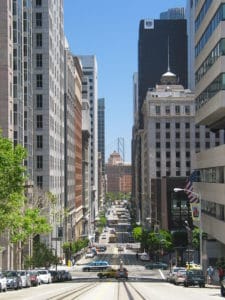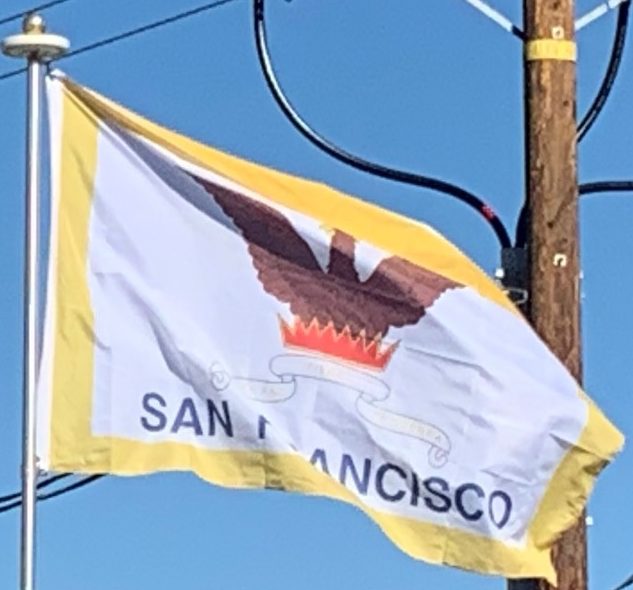The legacy of the California Gold Rush turned San Francisco into the principal banking and finance center of the West Coast in the early twentieth century. Montgomery Street in the Financial District became known as the “Wall Street of the West”, home to the Federal Reserve Bank of San Francisco, the Wells Fargo corporate headquarters, and the site of the now-defunct Pacific Coast Stock Exchange.

Bank of America, a pioneer in making banking services accessible to the middle class, was founded in San Francisco and in the 1960s, built the landmark modern skyscraper at 555 California Street for its corporate headquarters. Many large financial institutions, multinational banks, and venture capital firms are based in or have regional headquarters in the city.
Since the 1990s, San Francisco’s economy has diversified away from finance and tourism towards the growing fields of high tech, biotechnology, and medical research. Technology jobs accounted for just 1 percent of San Francisco’s economy in 1990, growing to 4 percent in 2010 and an estimated 8 percent by the end of 2013. San Francisco became an epicenter of Internet start-up companies during the dot-com bubble of the 1990s and the subsequent social media boom of the late 2000s. Since 2010, San Francisco proper has attracted an increasing share of venture capital investments as compared to nearby Silicon Valley, attracting 423 financings worth US$4.58 billion in 2013. In 2004, the city approved a payroll tax exemption for biotechnology companies to foster growth in the Mission Bay neighborhood, site of a second campus and hospital of the University of California, San Francisco (UCSF). Mission Bay hosts the UCSF Medical Center, the California Institute for Regenerative Medicine, California Institute for Quantitative Biosciences, and Gladstone Institutes, as well as more than 40 private-sector life sciences companies.
The top employer in the city is the city government itself, employing 5.3% of the city’s population, followed by UCSF with over 22,000 employees. Third—at 1.8% is California Pacific Medical Center, the largest private-sector employer. Small businesses with fewer than 10 employees and self-employed firms make up 85% of city establishments, and the number of San Franciscans employed by firms of more than 1,000 employees has fallen by half since 1977. The growth of national big box and formula retail chains into the city has been made intentionally difficult by political and civic consensus. In an effort to buoy small privately owned businesses in San Francisco and preserve the unique retail personality of the city, the Small Business Commission started a publicity campaign in 2004 to keep a larger share of retail dollars in the local economy, and the Board of Supervisors has used the planning code to limit the neighborhoods where formula retail establishments can set up shop, an effort affirmed by San Francisco voters.
Like many U.S. cities, San Francisco once had a significant manufacturing sector employing nearly 60,000 workers in 1969, but nearly all production left for cheaper locations by the 1980s. As of 2014, San Francisco has seen a small resurgence in manufacturing, with more than 4,000 manufacturing jobs across 500 companies, doubling since 2011. The city’s largest manufacturing employer is Anchor Brewing Company, and the largest by revenue is Timbuk2.
